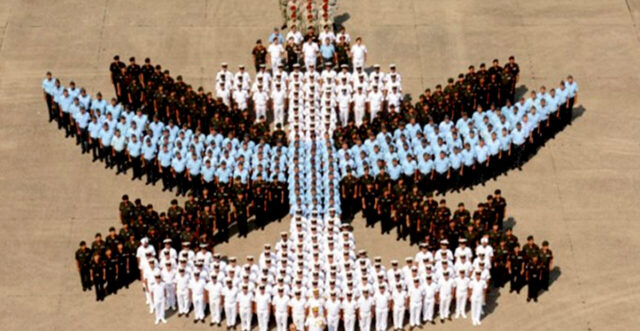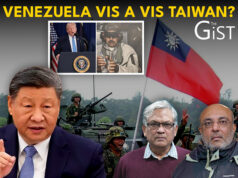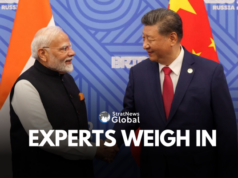Prime Minister Narendra Modi had stated in Parliament last year that plans to create theatre commands in the Indian armed forces were ‘progressing’ well. A year before that Parliament had passed the Inter-Services Organization (Command, Control and Discipline Act 2023, which gives commanders of tri-service units the legal framework, to exercise disciplinary authority over all personnel working under them. However, more recently, Air Chief A.P. Singh cautioned against rushing the implementation of theatre commands and advocated the way ahead with creation of a joint planning and coordination centre in Delhi as the first step towards establishing synergy amongst the services. His suggestion is to test the waters before putting in place the theatre commands.
Technically, the suggestion made was not incorrect as is obvious. However, it also reflects the deep insecurities that are inherent to accepting change of this magnitude and order and therefore, it is argued that India must have in place theatre commands in place sooner than later. The core message that needs to go out from the government of India is evolution time has taken long enough, it is time to put things in place.
The significance of Chief of Air Staff A.P. Singh’s remarks becomes apparent because of the occasion and venue. They were made at the first tri-services seminar “Ran Samvad” organised by IDS HQ and the Centre for Joint Warfare Studies, and conducted at Army War College (August 26-27). The Chief of Air Staff cautioned against implementing models existing in other countries and proposed a gradual process to be followed in actual implementation. Navy Chief Admiral D.K. Tripathi chose the occasion to state that Navy was ready to meet the goals of theaterisation within the given framework. Gen. Anil Chauhan, the Chief of Defence Staff (CDS) in his concluding remarks observed: “So, if you have sensed some kind of dissonance, let me assure you that we will resolve it in the best interest of the nation.” Coming from the man appointed to implement the theatre commands in the armed forces, it speaks volumes of the difficulties and challenges. It is, therefore, useful to recap some of the steps already taken by the government and armed forces in the direction of setting up theatre commands.
The appointment of the Chief of Defence Staff was by itself a step in that direction; actually IDS HQ creation in 2001 was the first shot. With Kargil War and recommendations of the Group of Ministers, the obvious conclusion was for greater integration and jointness. At this time, the Andaman & Nicobar Command was also created as an integrated tri-services command to safeguard India’s interests in Southeast Asia and most importantly, the Strait of Malacca. Two years later, the Strategic Forces Command came into being. Since then there was a hiatus till the creation of the post of CDS in 2019.
The experience of joint commands operating in a particular geography, like the Andaman & Nicobar Command or focused on a specific mission, like the Strategic Forces Command, are already in existence and provide Indian examples of joint command and control. There are many global models existing whose best practices are easy to adopt and implement. That, however, is not the issue. While the Andaman Command is only a tri-services integrated command, earlier under the Chief of Integrated Staff at the IDS HQ and now under the CDS, the SFC operates under the Nuclear Command Authority. The CDS is the Military Adviser to the NCA. The commander-in-chief of SFC reports to the CDS. Meanwhile, the armed forces have established under CDS, the Defence Cyber Agency and Space Agency. Thus, more functional agencies and organisations are being put into place, with a view to enhancing cohesion among the three services.
The next and more recent change introduced this year has been to create joint doctrines for cyberspace, amphibious, special forces and airborne operations. In July last year, the defence ministry even identified the HQ for the three proposed commands. Pakistan would be dealt with from Jaipur by the Western Theatre Command. China would be dealt with by the Northern Theatre Command HQ in Lucknow and the Maritime Theatre Command operating from Thiruvananthapuram would look at maritime security across the region. This broad delineation of responsibility is only the tip of the iceberg. After all, the devil lies in the detail. Each theatre will require assets, logistics and the HQ to be co-located, otherwise operations would be difficult.
The CDS clarified in May 2025 that the proposed theatre commands would focus only on operational aspects, while the service chiefs would focus on “raise, train and sustain”. Empowering the CDS to issue orders to the three services (June 2025) was an essential step in giving effect to the actual process of theatres. However, the issue of single service identity and role of the service chiefs still remain an issue of contention. Theatre commands will operate directly under the CDS. Thus, the service chiefs remain as administrative heads of the individual services?
Theatre commands in India will require a different mindset and approach. Perhaps as a test case, a single theatre command for China could be created, with two sub-theatres, one in J&K and responsible for the area up to the western border with Nepal. The other part would be responsible for the eastern border with Nepal to Myanmar. This is a rough sketch. As done with the order giving CDS control and authority over the personnel for all services through Parliament, it may be prudent to create a pilot command via the same parliamentary route. This is suggested that in military terms, the real and larger threat to India is China today. This is also likely to be the case in the foreseeable future, notwithstanding the recent bonhomie witnessed between India and China at the SCO Summit in Tianjin.
The important question is where does the Maritime Theatre Command fit into this? The logic of theatre commands is to have integrated assets available on call by the CDS when required. A separate Maritime Theatre Command effectively means that the Indian Navy will be left on its own. Surely, Army units would be attached to this command for out of area operations but questions remain. For example, if the Maritime Theatre Command is to operate against China in conjunction with Northern Command, what happens? Ideally, the A&N Command should be merged with Northern Theatre Command to deal with China and not be part of the Maritime Theatre Command. This is a radical proposal, likely to be questioned. The Maritime Theatre Command should be renamed as Southern Theatre Command to deal with all situations including maritime crisis, out of area contingencies and coastal security. This is the forte of the amphibious forces that India has and more that could be formed for future conflicts and crisis situations.
It is easy to argue that military assets will be allotted as and when required to confront the adversary, and in any theatre. That, fortunately, is already happening. That is why Operation Sindoor was executed so successfully.
From the remarks of the Air Chief A.P. Singh it appears that the Army and Air Force continue to operate on their own, but with central direction on the goal to be achieved towards Pakistan. Additionally, the import of A.P. Singh’s remarks appears to highlight the uniqueness of air power in battle. While this is true to an extent, modern warfare, given the heavy weight of technology, has to be fought in an integrated manner. As an illustration, the success of the air defence systems with the air force and army during Operation Sindoor were driven by technology. Therefore, doesn’t it make sense to operate jointly?
Note that rapid response requires joint training and awareness of the operating systems of the other services. Without that knowledge, joint operations would be futile. Joint command and control and joint operations are the main things to be implemented. Doctrines are fine but they deal with theory; the actual issue is acting together.
The available information on theatre commands suggests a gradual step-by-step approach to the issue, rather than forcing the matter. This approach gives the services time to think through the process of integration while maintaining their individual identity. It is important to first understand the concept and then perform the integration. That is why CDS Gen. Anil Chauhan has chosen to take the road of achieving gradual jointness. Taking off from the ground work done by Gen. Bipin Rawat, the incumbent CDS has worked towards getting the three services to agree on the basic principles. However, differences still persist but that should not forestall progress towards the ultimate goal. India may not be able to achieve theatre commands like China has done in the recent past, but recognition of the fact that it is imperative is sufficient at this stage.
The government could have taken the American route to get Parliament to pass something like the Goldwater-Nichols Act, 1986 to achieve jointness as was done in the US. While this option still remains open, the bottom line appears to be to gain consensus prior to achieving jointness. The question of course, does arise as to how long does the government want to wait? Is full consensus the answer? It is unlikely that India will ever manage to attain such a consensus. The action taken so far suggests forward movement irrespective of consensus, and given time, it is hoped that all stakeholders will come on board. The long-view is that of the imperative need for integrated command and control and operations. Achievement of that goal in the shortest time is possible only with the setting up of theatre commands. The process is certainly underway in India; the question is when will it be actually achieved?
(The author is former Director, National Security Council Secretariat. Views expressed in this article are personal)





